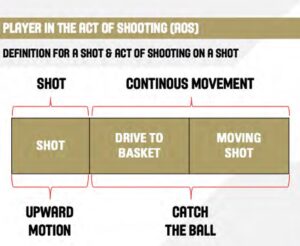IRS: A noose around the neck?
Everyone now knows what the instant replay system is, certainly the inclusion in football has made it popular worldwide, so much so that at all latitudes and in many sports we see that the protests of the players have been joined by the gesture of the rectangle made with the index fingers typical of football VAR. Whoever thought that the use of the television tool would eliminate refereeing errors was very wrong, certainly there has been a significant reduction in errors and many have been corrected, so the introduction can only be considered positive.
Italy in 2005 was the first country, outside of the USA, to introduce the IRS on basketball courts: in the National Cup Finals and in Play-offs series and a protocol was developed. This was gradually updated until the introduction of the instrument in FIBA competitions (2014), then the protocol became unique and univocal for all competitions under the aegis of FIBA. In some countries and competitions, the protocol has undergone minor changes or additions.
The strength of the tool lies in the fact that it allows you to go back in time and see whether the decision taken on the court is consistent with the rules. Being able to review, several times, something that happened in an instant or concerns millimeters and hundredths of a second, allows to verify and possibly correct. In order to avoid referees having to constantly review plays, a protocol has been drawn up listing the situations and moments of the game in which the tool can be used. Clearly, whoever wrote the protocol could not foresee all possible situations, but all situations must be brought under the protocol and under the rules! In 2020 FIBA placed the protocol in an appendix of the rulebook as well as the interpretations of the protocol. It should be noted that in 2020 something also changed in the definition of a play in the act of shoting (shooter).
The weakness of the instrument lies, as always, in the fact that it is used by man, who often abuses it! If the images do not provide obvious certainty, the decision should not be changed. The biggest problems arise, however, when going to review the IRS the referees discover that the action was vitiated by some other infraction or the call was totally wrong, perhaps overturned, or as in our case completely missed. At that moment the moral dilemma for the referee is obvious: to make the correct decision (according to the rules!) or to make the right decision (overriding or bypassing the rules?).
00:03.5 At the end of the 4th quarter, the black team, trailing by two pts throw-in the ball. The 21black’s pass received by his teammate 6black: he dribbles, gathers the ball, comes to a stop and then releases a three-point shot; the ball enters the basket just when the stop-lamps come on, the buzzer accompanies the celebration of the black players who embrace the scorer. The referees went to the IRS and, after reviewing the action, announced the cancellation of the basket due to a violation of the 6black, who had stamped one foot on the sideline while dribbling. The black coach, incredulous, accepts the referee’s explanation. The game will be resumed with a throw-in for the green team with 00:02.2 seconds on the game clock.
The decision taken on the court certainly does justice to the green team, in fact the violation of 6black, inexplicably escaped the two referees on the side of the ball is quite obvious, but it is not consistent with the rules and interpretations. Probably in the referee’s mind there was a vague memory of a similar situation, present in the FIBA interpretations (F-2.2), but just as probably it would have been more correct to apply interpretation F-2.3. The difference is very subtle but the difference between a shooter and a non-shooter is clearly defined in the rules in Article 15.
We have been talking to many insiders these days, discussing whether interpretation F-2.2 should be applied narrowly or loosely? That is to say, is 6black a non-shooting player or a shooter at the moment he steps on the line, because he will be shooting anyway! In our opinion there cannot be an elastic application of an interpretation because the elasticity would make the same interpretation interpretive. We are therefore in favor of a literal application of the same, since we cannot consider 6black as shooter by definition: when he steps on the line he is dribbling! The violation not called, even if reviewed by the IRS, cannot be sanctioned because 6black at that moment of the infraction is a “non-shooting player.
Independently of the technical error committed by the Crew, we would like to underline that this mistake could have been eliminated earlier. The trail referee (active) on the throw-in after the pass of 21black makes a small forward movement towards the playing court, but remains in line with the player who threw in the ball. This static position does not allow him to see when 6black steps on the line. The worry of contact leads the trail and the lead ref to look up only, and although they are fairly well placed neither of them puts their eyes on the ground to “pick” the violation. More responsibility for the trail who should however “close” towards the end line and look after his own primary area of competence. Absolute responsibility of the lead who in a last play with very few seconds on the game clock must be able to look and bring help on a decisive play. Calling immediately the ball out of bounds violation, confirmed by an IRS review, the refs would have guaranteed the teams and the spirit of the rules.
We are currently aware that the Turkish Federation has stated that no mistakes were made by the referee’s team. Probably an opinion will also have been requested from FIBA. Certainly if there will be an answer, one way or the other, it will be the case! We are curious to know in which direction both refereeing structures will move. It is clear that if an interpretative reading of the shooter’s status were given, the FIBA interpretations currently in use, on the IRS, would have to be entirely rewritten.

